Creative Climate Communications at/around the UN conference on climate change (COP21)
by:
joie de vivre communications climatiques creatives!
Despite a current ban on a ban on public demonstrations the Paris area – and particularly around the Champs-Elysees in central Paris and in Le Bourget through the end of next week (two days after the scheduled end to the Paris round of negotiations) – creative communications on climate change at the United Nations Conference on Climate Change (COP21) this past week have proliferated.
Look no further than the ‘silent march’, organized by Avaaz and other organizations, where 20,000 pairs of shoes were laid out in Place de la République to provide symbolic public pressure for climate policy action at COP21.
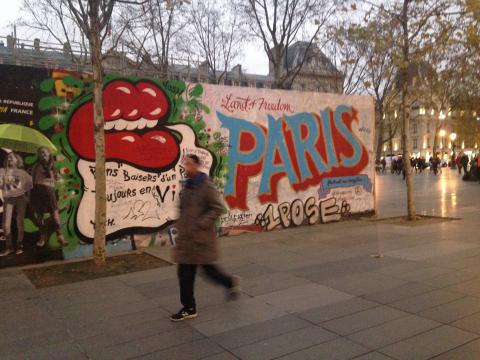
caption: Graffiti at ‘Place de la Republique’ near the memorial to victims of the November 13 Paris terrorist attacks.
Entering the venue in Le Bourget, the maps themselves represented forms of creative communication on climate change.
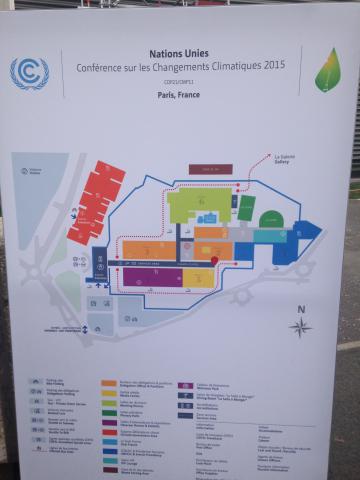
caption: the ‘Climate Generations Area’ in red was a place outside the blue security fences, and a good 10-20 minute walk from other areas of the venue. Thus, creative events often then proceeded ‘out of view’ of many delegates and participants in the direct negotiations (often in Hall 6) exhibitor spaces and side events (Halls 1, 2, 3 and 4) and press conferences (Hall 5).
Common and integrated spaces were limited to permissible/tolerated locations. Nonetheless, the photo below depicts a ‘Divestment/Keep it in the Ground’ noontime demonstration in front of the replica Eiffel Tower.

caption: the replica Eiffel Tower (constructed from school chairs from the 1890s when the Eiffel Tower itself was built) was a space in the main walkway that possesses rare potential integration and collectivity at the COP21.
In more formal spaces, there were many events and activities such as a Connect4Climate-sponsored ‘Youth4Climate’ session featuring the upcoming 2016 film ‘An Inconvenient Youth’ (by Slater Jewell-Kemker) along with a panel Kumi Naidoo, Bianca Jagger, Fernando Mereilles, and moderator Max Edkins.
Furthermore, the ‘ArtCOP21’ – in Gaîté lyrique and connected to others around the world in solidarity – has convened many creative communicators, and featured many art works where, through their activities, they pronounce ‘Climate is culture’.
In addition to many spirited and creative events, there are seemingly countless informal interactions and confrontations as well, from the riff of ‘Arche de Noe’ in an exhibit inside the COP21 – commissioned by the French Ministry of Environment and Development – to more renegade and subversive work of UK-based ‘Brandalism’, who called attention to corporate-influence in mainstream discussions of options for climate action through their 600 fake outdoor advertisements throughout central Paris.
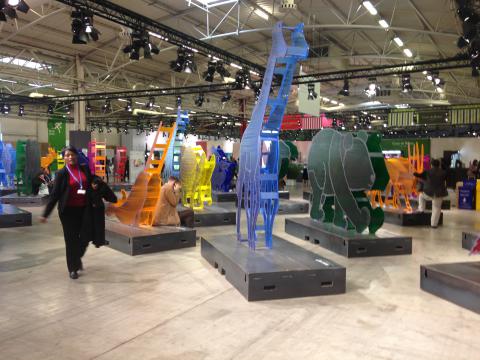
caption: a snapshot of the ‘Arche de Noe’ exhibit, a creation by Gad Weil.
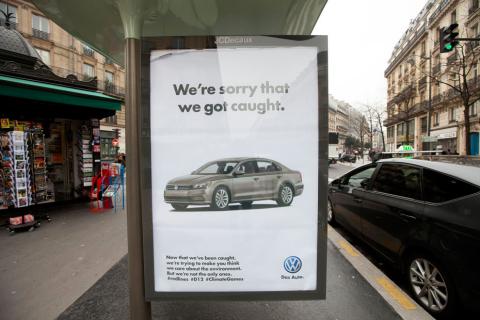
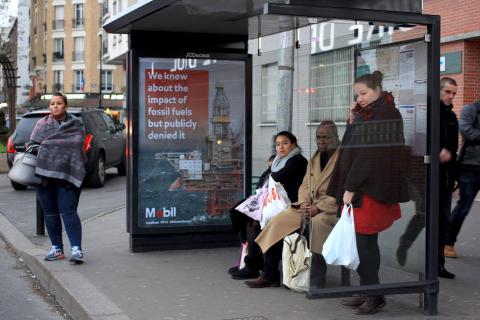
caption: two of the works of #brandalism in Paris - see more here - this was a collective efforts of 82 artists across 19 countries, including Banksy, Neta Harari, Jimmy Cauty, Escif and Kennard Phillips
These expressions in and around COP21 are just a small sampling of those that I’ve seen punctuating the first of two weeks of activities in and around Le Bourget/Paris.
And these communications marked ongoing efforts to ‘meet people where they are’ through a variety of modes, methods and perspectives. They sought to apply imagination and take communication risks.
We will see how these efforts successfully, resonantly, effectively relate various dimensions of today’s climate challenges as more organizations, institutions and practitioners around the world have increasingly explored creative spaces of climate communications.
In these spaces, one things is clear: we must be prepared to take communication risks, to potentially make mistakes, and apply imagination in order to come up with new and innovative ways of re-telling climate stories in the twenty-first century.
Moreover, while many scholars (vigorously) research and debate the extent to which media representations and portrayals are potentially conduits to attitudinal and behavioral change, there remains a dearth of systematic analyses regarding how creative climate communications elicit varying levels of awareness and engagement. Creative climate communications shape perspectives, attitudes, intentions, beliefs and behaviors among the public citizenry around the world. Put simply, they make climate change meaningful for everyday people.
There’s a lot of work to do, so get stuck in rather than getting stuck.
